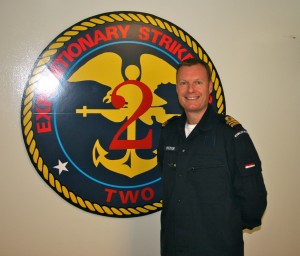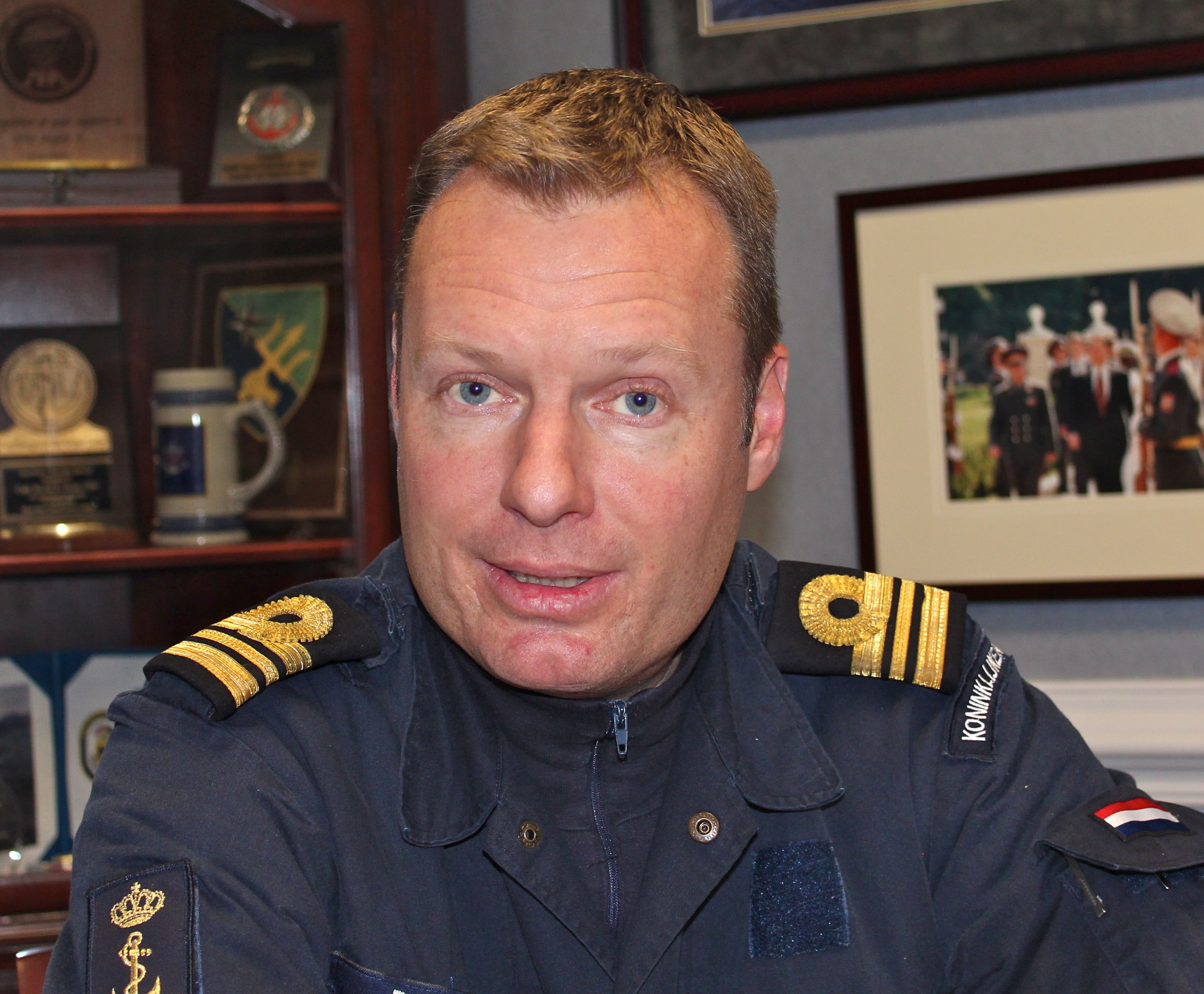Prior to the Bold Alligator 2012, we had a chance to talk with Lieutenant Commander George Pastoor provided a unique coalition perspective. Pastoor is a Dutch Naval Officer with Expeditionary Strike Force 2 and the lead planner for Bold Alligator.
As Pastoor noted in the earlier interview:
I’m basically on the inside, as I am a Naval Officer embedded in the Expeditionary Strike Group 2 staff, as well as coalition member, and so I’m seeing the process from both sides. I’m on the receiving end on one side, and I’m on the giving end on the other side as being the developer of the operations and the plans.
Coalition is a key part of Bold Alligator. It’s been there from beginning. From the very first concept development conferences in the beginning a year ago, coalition engagement was central.
Nowadays operations aren’t done without coalitions. The Bold Alligator process is U.S. and coalition as one team from beginning onwards. It’s really working well, getting to the same goals, doing the planning process together, working in close coordination with the French Task Group, having their plan’s over, having 6 to 10 officers from New Zealand flying in for planning conference.
We have a lot of coalition participants in our staff for the operation itself really emphasizes the importance of coalition.
https://sldinfo.com/coalition-engagement-in-bold-alligator-2012/

In a return visit to ESG-2 after the exercise, we had a chance to get a sense of some take-aways from the exercise by the Lt. Commander.
Pastoor: It was a great success overall. A core challenge is getting the various elements to work together operationally.
First, there is the joint piece of the challenge. Getting the ESG to work with MEB was the core element of this challenge. This worked well. We did planning together; and we did the operational planning team together and it showed when we came to the exercise.
Second, there is the international piece where we had several of the partners embedded in the staff to shape an approach beforehand to get significant coalition commonality.
It’s always difficult when you bring two different animals to each other, although they are military, but they are different cultures, they are raised differently. One is on U.S. doctrine, the other one is on the NATO doctrine, how do they speak to each other? Do they use the same language in the end?
And we struggled with the communication challenge in the beginning using SIPERNET, the U.S. Classified Network but in the end we used CENTRIX as the one medium to operate in.
And that was one of the biggest success stories of Bold Alligator: bringing the coalition forces together, and having them work, and understand what each other were doing.
SLD: What lessons learned are you taking back to the Netherlands?
Pastoor: I’m taking back knowledge on how the U.S. do business, how do they work? What is their doctrine? It’s such a large force for bringing at sea consisting of 40 ships live and synthetic.
And there’s a huge span of control over it to control, and the challenge of managing a large seabase.
And then there is this land part as well to it. So how you organize such a force, what do you need to do to make the force effective?
SLD: The Dutch sent observers to the Fort Pickett Raid. What was their impression of the impact of the Osprey on the operation?
Pastoor: For us, a normal insertion from the sea would be 30 miles inland; with the Osprey the insertion in this case was more than 180 miles. We had two observers specially flown over from the Netherlands to investigate the possibilities, notably how deep the operation was that was being executed, so it is interesting of course.
The operational impact on the seabase is significant. There’s the ability to do over the horizon approach to show up from over the horizon. You have that element of surprise. You have that long reach, and you operate from over the horizon to the shores, which is a great capability as well.
It’s like boxing, when you have the longer arm, you can punch the enemy in the face.
SLD: What recommendations do you have moving forward?
Pastoor: We should both plan and operate with CENTRIX, not SIPERNET. We planned the Exercise in SIPERNET, but this created challenges throughout the exercise, and then we found ways to move communications over to CENTRIX. It would be better to plan in this communications medium and operate within it.
Another key take-away for me is the flexibility of the seabase for future operations. It’s all about power protection from the sea. We can fix an enemy brigade on the shores by just showing up on the horizon with large amphibious force; it forces the enemy to react, either re-enforcing in place or moving.
But by operating from the seabase, we can quickly move from one space to another space, a couple of 100 miles per day; the enemy has not the same capability as we have doing that on land because land maneuvering is slow by comparison.
Addendum
Several allies were involved in the exercise and indeed contributed capabilities to the effort.
Among those allies participating were the following:
- The UK provided 120 Marines, fleet diving unit and staff augments;
- Italy provided staff augments and observers:
- France provided 1 LHD, 1 escort, 21 LCMs, 1 EDA-H, 300 landing troops, Navy Commando Group, 6 Helos, 50 staff augments;
- Spain provided staff augments and observers;
- The Netherlands provided 100 Marines, Boat Platoon, Fire Support Team and Staff Augments;
- Australia provided staff augments and observers;
- Germany provided staff augment and observers;
- Canada provided 2 MCM and EOD capabilities;
- New Zealand provided staff augments and observers.
Featured Photo: A French special forces soldier coming ashore during Bold Alligator 2012. Credit: Murielle Delaporte, SLD


